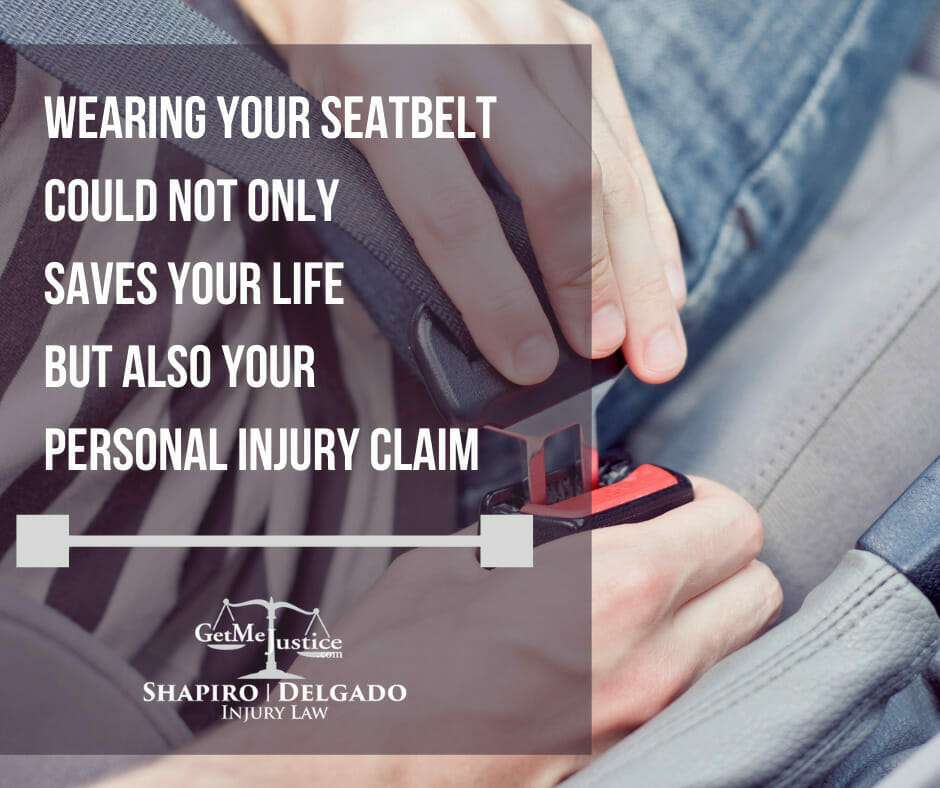
While seatbelts were first featured in cars in the 1950s, it wasn’t until 1968 that all vehicles throughout the country were required to have them installed. Since then, seatbelts have saved hundreds of thousands of lives.
Despite the obvious benefits of seatbelts, many drivers and passengers alike fail to buckle up, risking serious injuries or death. Additionally, the repercussions don’t end there. If a motorist fails to wear a seatbelt, this could significantly decrease or altogether eliminate any compensation that he or she may have otherwise been entitled to.
According to one of the most recent data put together by the National Highway Traffic Safety Administration (NHTSA), of the 37,133 individuals killed in car accidents in 2017, 47 percent were not wearing a seatbelt. The NHTSA approximates that seat belts saved nearly 15,000 lives and would have saved an additional 2,500 had vehicle drivers buckled up.
All 50 states in the United States require that motorists use seatbelts. Typically, states have multiple regulations dealing with seat belt usage. For example, New Jersey has regulations requiring children under the age of 8 to be secured in a child seat as well as a different law requiring every person over the age of 8 to wear a seatbelt. States likewise vary regarding whether a vehicle driver’s failure to use a seat belt is a primary infraction—meaning that police officers can pull over a driver for nothing more than not using a seatbelt.
Seatbelts are relevant when it comes to personal injury cases.
However, under the legal doctrines of contributory negligence, comparative fault, and the mitigation of damages, a victim in a car accident can significantly lessen their ability to recover money for their injuries, if they did not take the legal precaution, (and smart choice) or wearing a seatbelt.
Both comparative fault and comparative negligence are ways that courts use to handle circumstances where an accident victim shares responsibility for the injuries they suffered. Mitigation of damages is a principle that calls for an accident victim to do what they can to practically limit their damages. As explained below, while all of the doctrines can play a role in how much a plaintiff can recover, the legal doctrines are quite different.
Only a minority of states rely on a contributory negligence framework. However, those states do not generally permit the jury to listen to evidence of a plaintiff’s failure to wear their seat belt. This is since a motorist’s lack of a seatbelt does nothing to cause an accident.
An additional crucial principle in accident cases is the requirement that plaintiffs mitigate their damages. Generally, the legislation requires a plaintiff to take reasonable steps to avoid additional injuries. A plaintiff’s failure to mitigate damages might lead to a decrease in their award from the court. In general, most states consider a plaintiff’s decision not to put on a seat belt as a failing to minimize their problems. The argument is that, while wearing a seatbelt does not protect against an accident, it can lessen an accident victim’s injuries.
Naturally, evidence that an accident victim was not wearing a seatbelt is only pertinent in some car accidents. For example, if the victim’s injuries were not associated with their failure to use a seatbelt, seatbelt non-use proof is not pertinent and shouldn’t be heard by the jury. In this case, the burden is on the defense to establish that the plaintiff’s injuries would be less serious had they buckled up.
The relevance of wearing a seat belt can not be overstated. Seat belts are a critically vital security feature with the ability to save lives. Additionally, an accident victim’s failure to wear a seatbelt can likewise detrimentally impact their capability to recover monetary payment for their injuries. As such, drivers should think twice before they forego using seat belts.